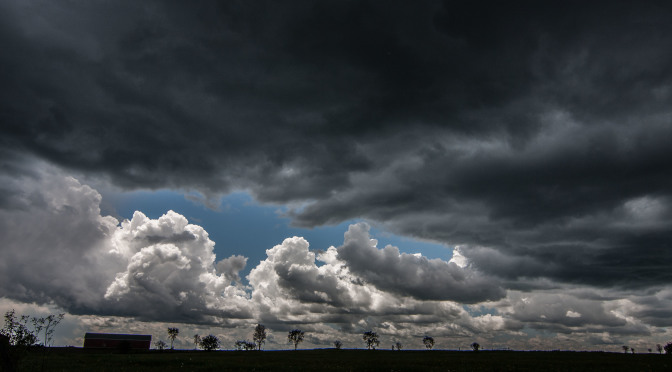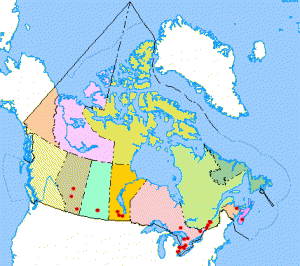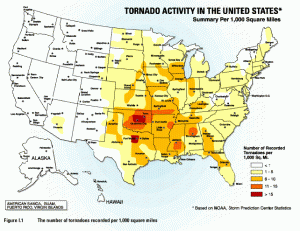Fear. Mental illness. Apocalyptic visions. It’s so hard to tell the difference between them these days.
In Take Shelter, Curtis, a young husband and father from the midwest, obsesses about building out his underground storm shelter. Times are tough, jobs are in short supply, and families teeter on the edge of survival. Not a great time to experience visions of an apocalyptic storm to end all storms, nor share them with your skittish friends and family.
http://www.youtube.com/watch?v=I5U4TtYpKIc
Even being of reasonably sound mind and body, it took me two days to watch the entire movie. There were no vampire or zombie bloodbaths to terrify my soul, but a low grade, rhythmic anxiety implanted itself in my brain, refusing to budge. Take Shelter corrals our fear of global warming, the decline of western civilization, of social ostracism and financial devastation into a neat package that reflects our zeitgeist. A devastating storm is plausible and tangible, so is job loss, mental illness, and a child who requires medical care. In the end, we are left to reflect on whether Curtis suffers from garden variety lilapsophobia – a fear of tornados and hurricanes – or whether his terrifying visions finger us all for not paying enough attention to the elephant in the room.
Fear of the larger, and often uncontrollable, issues around us, is no new business. In recent memory, the World Wars, followed by the lingering cold war threat, left a grey malaise that tainted daily life, encouraging people to shore up their houses as their primary bastion of safety and security. In 1961, Canadian Prime Minister John Diefenbaker endorsed a small book produced by the Emergency Measures Organization entitled Your Basement Fallout Shelter: Blueprint for Survival #1. In his introduction he stated “Each householder can and should decide whether or not to have this form of family protection. I recommend it.” Its purpose was to teach citizens how to construct, stock, and live in a personal, home-based nuclear fallout shelter in the event of war. Can’t get more mainstream than having the leader of the country recommend it.
“Dief the Chief” was also responsible for the mother of all fallout shelters. Nicknamed the Diefenbunker, it is a huge four-storey bunker, buried deep under a hillside in rural Ottawa. It was meant to house crucial elements of Canadian government in the event of a nuclear war and includes a once-functional CBC radio studio. At one time top-secret, public tours are now available, although interior photography is forbidden. (Correction: non-flash photography is permitted.)
General anxiety aside, there are “tornado alleys” in Canada and the United States where storm shelters address legitimate needs. According to the National Climatic Data Centre in Asheville, NC:
…tornadoes have been documented in every one of the United States, and on every continent, with the exception of Antarctica (even there, a tornado occurrence is not impossible). In fact, wherever the atmospheric conditions are exactly right, the occurrence of a tornadic storm is possible…However, some parts of the world are much more prone to tornadoes than others. Globally, the middle latitudes, between about 30° and 50° North or South, provide the most favorable environment for tornado genesis…Interestingly, the places that receive the most frequent tornadoes are also considered the most fertile agricultural zones of the world. This is due in part to the high number of convective storms delivering needed precipitation to these areas.
Natural Resources Canada’s “Atlas of Canada” yields a fascinating history of natural and man-made disasters in Canada, sorted by type. This map shows the sites of major tornadoes in Canada.
In August 2011 an F3 tornado devastated the town of Goderich, Ontario, flattening its historic buildings and killing one person. It happens.
Source: http://www.fema.gov/index.shtm
While hundreds of companies across North America ply underground shelters or garage-ready safe rooms, this story from the Associated Press decries that “the old-fashioned storm shelters that once dotted yards across the Plains have become relics of the past as home buyers invest in other features or try to save money.” I think it’s human nature to want the upgraded granite countertops over an empty box you hope you never have to use.
The Canadian government’s www.getprepared.gc.ca site provides emergency preparedness information for individual households and communities. In case you find yourself face to face with the warning signs of a tornado – severe thunderstorms, extremely dark sky (green or yellow), a funnel cloud, or hear rumbling or whistling – here’s what you should do:
If you are in a house
- Go to the basement or take shelter in a small interior ground floor room such as a bathroom, closet or hallway.
- If you have no basement, protect yourself by taking shelter under a heavy table or desk.
- In all cases, stay away from windows, outside walls and doors.
If you live on a farm
- Livestock hear and sense impending tornadoes. If your family or home is at risk, the livestock will be a non-issue. If your personal safety is not an issue, you may only have time to open routes of escape for your livestock. Open the gate, if you must, and then exit the area in a tangent direction away from the expected path of the twister.
If you are in an office or apartment building
- Take shelter in an inner hallway or room, ideally in the basement or on the ground floor.
- Do not use the elevator.
- Stay away from windows.
If you are in a gymnasium, church or auditorium
- Large buildings with wide-span roofs may collapse if a tornado hits.
- If possible, find shelter in another building.
- If you are in one of these buildings and cannot leave, take cover under a sturdy structure such as a table or desk.
Avoid cars and mobile homes
- More than half of all deaths from tornadoes happen in mobile homes.
- Find shelter elsewhere, preferably in a building with a strong foundation.
- If no shelter is available, lie down in a ditch away from the car or mobile home. Beware of flooding from downpours and be prepared to move.
If you are driving
- If you spot a tornado in the distance go to the nearest solid shelter.
- If the tornado is close, get out of your car and take cover in a low-lying area, such as a ditch.
In all cases
- Get as close to the ground as possible, protect your head and watch for flying debris.
- Do not chase tornadoes – they are unpredictable and can change course abruptly.
- A tornado is deceptive. It may appear to be standing still but is, in fact, moving toward you.
Although our house is more than a hundred years old, there is no trace of a storm cellar, or even a root cellar, although we have a fully-intact stone cistern that might do the trick. I’m not at the point of pulling a full “Curtis”, but maybe the impending spring break will be a good opportunity to get the kids involved in household emergency preparedness and do what we’ve been putting off, including implementing and practicing a fire evacuation plan.
As the saying goes, “Shit happens.” Maybe you can’t change an unexpected event, but sometimes you can influence the outcome, lessen the impact when the poop comes raining down. Seems a little emergency preparedness could go a long way for piece of mind.



2 responses to “Shelter from the Storm”
Hi Katie –
Thanks for the correction about the photography at the Diefenbunker. Can you tell me: do you have the small book/pamphlet in the store “Your Basement Fallout Shelter” that I reference in the article? Seems when I was in there were only copies in French. Or else I’m confusing it with another book….. Thanks Andrea
Just a quick correction regarding the Diefenbunker – photographs are welcome, although flash photography is prohibited. Guided and self-guided visits available!